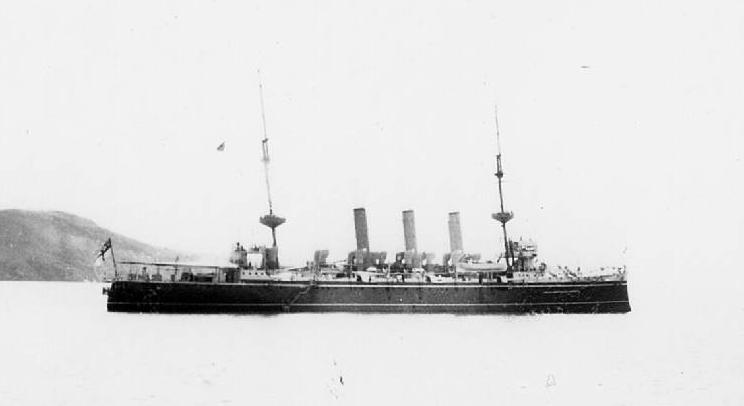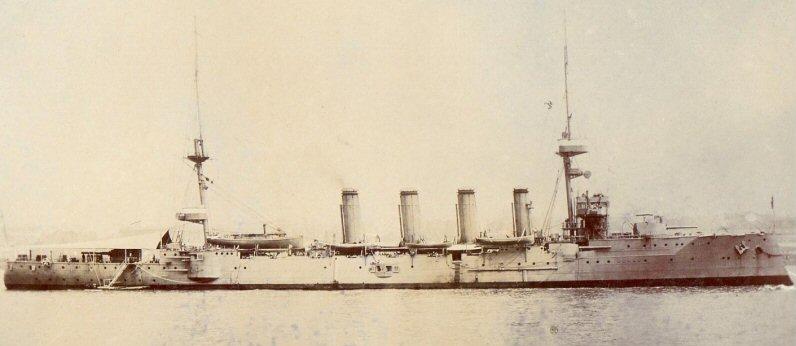
Timeline of the Australis Navy
1850-1900
The Navy building yards were established in Newcastle in 1856 and the Adelaide yard in 1871. Both yards started building minor vessels for the Australis Navy that were mainly in the coast defence style and merchant vessels for the Government. The largest vessels completed during this time are the 36 transport ships for the Government for use in bringing immigrants from Southern Europe and the Middle East areas to Australis while transporting goods to those markets. This period is a learning curve for the yards, gaining in experience with each ship. The first powered, iron ships are built in the 1870's and soon take over the migrant trade route.

1901-1914
The first large Naval ships arrived in Australis waters during this period - 1905. The ex-Chilean Battleships bought from the British builders to stop them falling into unfriendly hands were not to Royal Navy standard so were transferred to Australis. The original names (Swiftsure & Triumph) were changed to Otago and Tasmania to reflect their new owners. Otago was discarded and stripped in 1918-19 while Tasmania was sunk by a U-Boat in 1915. They were accompanied by two Armoured Cruisers of the County class, as both types of ship had the 7.5" gun, to keep the ammunition supply at a reasonable level. Original thoughts of using the names Australis and New Zealand for the new battleships were quashed when the Navy told the government that they would be designing and building bigger and better ships in the near future. It was during this period that the Australis large caliber gun foundry was started in Adelaide with a medium gun foundry in Newcastle. Plans for the new Dreadnought vessels were brought out to Australis with the new ships but the yards were not quite ready for that size of ship. The largest ships built so far were two protected cruisers with 6" armaments for trade protection and these ships were in continuous use (as much as training ships) on the Perth to Red Sea trade route. In 1905 the Navy yards laid down two more cruisers of an enlarged County type to be armed with 8 x 7.5" guns in a lozenge arrangement. These ships were similar to the British Duke and Warrior classes. These ships were followed in 1908 with two Neptune type Battleships and two Indefatigable type Battlecruisers both with 12" main armaments. Another battlecruiser was started in 1910 in the Tiger class type with the first 13.5" guns and was followed in 1911-1912 by 2 more battleships in the Iron Duke type. 1913 saw the introduction of the 15" gun with Australis having received plans for both the R Type and Queen Type battleships. Australis chose the Queen type and laid down 3. The last ship laid down during this capital ship building phase was the battlecruiser of the R class laid down in 1915. This ship differed from its UK counterparts as it was to be armed with the 14" guns from the incomplete Chilean battleship that was completed as the Aircraft Carrier Eagle. Various cruisers were also laid down and completed during this time with 4 Bristol class and 4 Boadicea class being laid down 1906-1909 then a further 6 Chatham class were laid down in 1910-11. Destroyers had not featured greatly in Australis thinking as the range of these ships was to short to make them more than harbour protection vessels. It wasnt until 1910 that the first full destroyers were laid down of the 'I' class and these were followed in 1912/13 by 'L' class vessels.

1914-19 - World War 1
Wartime construction completed those capital ships already building and the only new ship was the battlecruiser laid down in 1915 as noted above. Otherwise new construction centered on cruisers, destroyers, and minesweeper / escort type vessels. Cruisers were of the C type then E type followed by a new Armoured cruiser type. Destroyers followed the UK types with R & S types, VW in normal destroyers with Marksman Class leaders being built for the RS types and then the Admiralty type Leader class ships to go with the VW type ships. Minesweepers and escorts were all of the Hunt type which started being laid down in 1914 and laying down of these vessels stopped in 1917 when victory became apparent. The Hunt type vessels were built in mainly commercial yards to free the Navy yards for major construction and repairs and the finish of the Hunt class varied greatly. Some were of shoddy construction and lasted only a few years in service. All had been discarded by the start of WW2.
1920-1939 The Inter-War Years
Because of its navies size and its links to Great Britain, Australis was made a signatory of the Washington Treaty with limits similar to France, Italy and Japan. With the completion of the Australis battlecruiser in 1919, Australis' limits were reached. No further capital ships could be built prior to 1930 when Australis was allowed to lay down 2 new ships to replace the old Neptunes. The immediate after-war period was filled with the completion of the ships laid down during the war and as yet uncompleted. 2 E Type cruisers and 2 armoured cruisers fell into this category along with several destroyers. New construction centered on cruisers with first the County types then the new generations of light cruiser. Destroyer construction followed British types with the A-I classes being built during 1928-1936. Early ships started being taken in hand in 1934 for modernisation and reconstruction. Some ships had had refits earlier but these were more just keeping the ships up to date. 1934-35 plans for reconstruction of the battleships, cruisers and dextroyers completed prior to 1920 came into being with the entry into the armoury of the twin 4.5" dual-purpose turret in below deck and free standing mountings. The same gun system was also to be incorporated into secondary armaments for cruisers and battleships while the destroyers would use the freestanding turret as a main armament. With the "Great Depression" still in force Australis only undertook the design of its new battleships. It was not untill 1933 that the first ship was laid down with a sistership in 1935. New escorts to replace the Hunt type started building in 1931 and continued right through to 1944 with the same basic design. The I class destroyers were discarded in 1919-20 and the L's had been discarded on completion of the new A-I types. The old R&S type destroyers started being replaced by ships laid down from 1934 onwards. The first few R&S ships which were completely worn out were sold or discarded/scrapped the better ships were kept and renovated into destroyer escorts with more either anti-submarine or anti-aircraft fittings. New guns and turrets were entering the armoury lists on a regular basis from 1934 onwards, mostly in the Dual-purpose and anti-aircraft range as aircraft showed that they were a force to be reckoned with. Aircraft carrier construction was something that the Australis navy was happy to plan for and build when able. During the period that 2 battleships and a battlecruiser were laid down, 8 aircraft carriers of various types and sizes were also laid down.
The aircraft carriers were made possible because of the setting up of the Commonwealth Aircraft Corporation in 1917 in Melbourne that would produce its own aircraft types and produce UK designs under license. Thus when a new aircraft carrier was being built or converted, an order for aircraft complemement and spares could be ordered through the CAC to be ready for completion of the aircraft carrier.
The period 1930-34 was the interesting area as the London Naval Conference was convened in 1930 in the middle of the Great Depression with Britain calling for even greater restrictions than those already in force. Pushing for 26,000 tons and 12" for battleships, with cruisers to 8,000 tons and 6", this would have helped Britain as they most needed numbers of ships rather than big ships. Japan said 'No' and the US said maybe and with that, those limits never made it. Japan also said it would not be under treaty limits any more as it was going to build new ships. The US of course could not allow the Japanese to build ships without answer. Japan however did indicate that they would act in the spirit of the Washington limits. This is quite interesting as the Japanese designers had been told to think 'maximum' sizes which lead to the Yamato type at 65,000 tons standard displacement. America stated that if Japan had not ratified the Washington limits as redefined in London by 1932 they would no longer be under any obligation either. The Japanese didnt sign and the next arms race was on.
1939-45 World War 2
Again as with the First World War, once war was declared only those capital ships that were building were to be completed. It was not until 1940 that more Aircraft carriers of several different types were laid down. Construction had centered on cruisers, destroyers and escorts. Rather than design new ships for the escorts, the new Escorts and Frigates classes that had been started in the 1930's were kept with and numbers were increased markedly. Cruisers were in two types with an anti-aircraft type and a general purpose light cruiser with 6" guns. A destroyer type of the Modified A-G types was used as the basis for a War Emergency design. It was found, very quickly. that specialised Fleet Replenishment Ships were required for support of the battlefleet. Two types, an oiler and a dry stores ship were designed and built in numbers. Room had to be found for enlarged AA weapons outfits, radar, asdic all got better and required more space not just for the equipment but also for the crew to use them. Ships got bigger while the armament remained the same. The guns fired faster. The older ships performed well against their more modern counterparts with many battles being won by ships that had probably only just escaped the scrap yard.